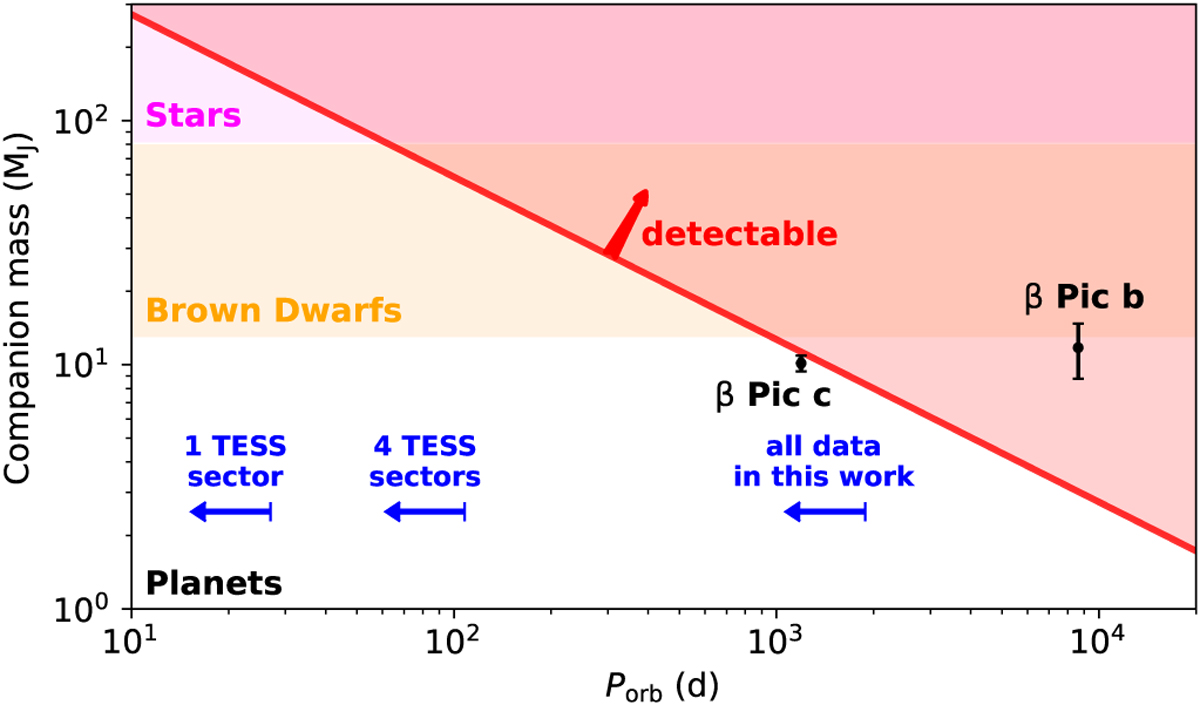Fig. 13

Download original image
Detection limits for the β Pictoris system based on the calculations presented in Hey et al. (2020b) assuming 1.8 M⊙ for the star and an inclination of 90° for both planets. The detectable parameter space for companions depending on their orbital period Porb and mass is shaded red, assuming β Pictoris is a non-ideal δ Scuti pulsator (see Sect. 5.5 for a discussion on the pulsational modes of β Pictoris as seen by TESS). β Pictoris c is generally not detectable due to the intrinsic noise of the pulsations, and the time delay caused by β Pictoris b has a period that is too long in comparison to the baseline of our observations. The masses corresponding to brown dwarfs (13 MJ ≲ M ≲ 80 MJ) are shaded in yellow, and the stellar regime (M > 80 MJ) is in magenta, with MJ being a Jupiter mass. The figure is adapted from Hey et al. (2020b).
Current usage metrics show cumulative count of Article Views (full-text article views including HTML views, PDF and ePub downloads, according to the available data) and Abstracts Views on Vision4Press platform.
Data correspond to usage on the plateform after 2015. The current usage metrics is available 48-96 hours after online publication and is updated daily on week days.
Initial download of the metrics may take a while.


